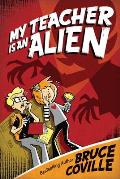As the
last weekly Robin discussed, in the spring of 2004 DC Comics put Stephanie Brown, formerly the self-guided teen crime-fighter Spoiler, into the Robin costume. All along this was part of an overarching
Batman storyline about a gang war in Gotham City that would end with Stephanie being killed.
The company didn’t anticipate the reader reaction to the new Robin. Stephanie appeared in the multi-colored costume on three issues of
Robin, one of
Detective, one of
Batgirl, and one of
Teen Titans. (There may be others I missed.)
Sales of
Robin jumped from 32,925 for issue #125 to 49,060 for issue #126, the first to feature Stephanie in the multicolored costume—up by nearly 50%. It’s normal for sales to rise when readers expect an issue to be a milestone, but in this case the sales also stayed significantly higher than before: 40,750 for #127, and 37,255 for #128. The magazine then entered the
War Games crossover.
The same effect appeared in two other magazines, though to a lesser extent.
Batgirl was selling about 26,000 copies before and after issue #53, which featured Stephanie as Robin on the cover; that issue sold 30,000.
Detective Comics was selling about 35,000 copies; the issue that highlighted the new Robin sold almost 37,000. Stephanie’s cover appearance on
Teen Titans, #13, had no effect on that magazine’s pattern; it was already one of the company’s top sellers.
(All those figures come from the invaluable
Comics Chronicles website. They’re based on back-calculating the numbers reported by Diamond, the dominant comics distributor. While not exact, they’re useful for comparisons.)
Paul Sebert’s
article at Inside Pulse noted a couple of other measures of fan interest, though without documentation: “Fan art of Stephanie as Robin,” and general chatter. Sebert, writing two years later, went on to criticize the publisher’s lack of response to that interest:
So just how does DC respond to this totally spontaneous and unexpected fan response? How do they adjust their plans realizing that they’re about to kill off the breakthrough character of the year? Well they do nothing… really. Damn the torpedoes and full speed ahead they decide to continue their original plan for the War Games crossover in which they killed off Steph Brown just for the sake of well… it was a crossover and for some strange reason you can’t have a crossover these days without killing someone.
But everyone knows that comic books are planned months in advance. By the time DC got word that
Robin sales were staying up, the magazines that showed Stephanie dying were well into production. And the company probably had further storylines planned out, with Batman becoming more isolated and Tim Drake back as Robin and full of adolescent angst. The company was on that train, and couldn’t jump off.
Furthermore, as much as comics fans and creators like to criticize crossovers and character deaths, they sell magazines.
Detective jumped from 37,000 copies to 51,000 when
War Games started, and
Robin jumped from that Stephanie-fueled 37,000 to over 45,000. However, unlike
No Man’s Land and some other Batman crossovers that preceded it, neither critics nor fans seem to remember
War Games fondly.
Stephanie Brown’s last cover appearance as Robin (so far) was on
Detective, #809, the first issue in which DC went back to address the fallout of
War Games, both in Gotham City and in the real world. This
“Dead Robin” cover produced another big sales jump over the previous issue of
Detective—from 38,000 to 49,000. But that might well have been due in part to the success of the
Batman Begins movie that same month of 2005.
Corrina Lawson at
Wired’s Geek Dad wrote criticized the cover image: “I gave up reading monthly Batman comics in 2004 [sic] after DC featured the bloody body of a teenage girl on the cover.” That raises the question of why the
Wired website itself displays the image.
It seems significant that this cover showed Stephanie as Robin in death, even though in
War Games Batman had fired her from that role and she was back to being Spoiler when she died. It was a tacit acknowledgment that she was a more popular Robin than DC had expected.
This issue also portrayed Dr. Leslie Tompkins, a physician who knows Bruce Wayne’s secrets, confessing to having let Stephanie die as a lesson to him. Fans
roundly criticized that moment as out of character. But was it, as
a few fans claimed to have foreseen, the DC creative team’s way to open the door for
Stephanie’s eventual return?
 So what do Robin the Boy Wonder and the White Rabbit have in common?
So what do Robin the Boy Wonder and the White Rabbit have in common?



























